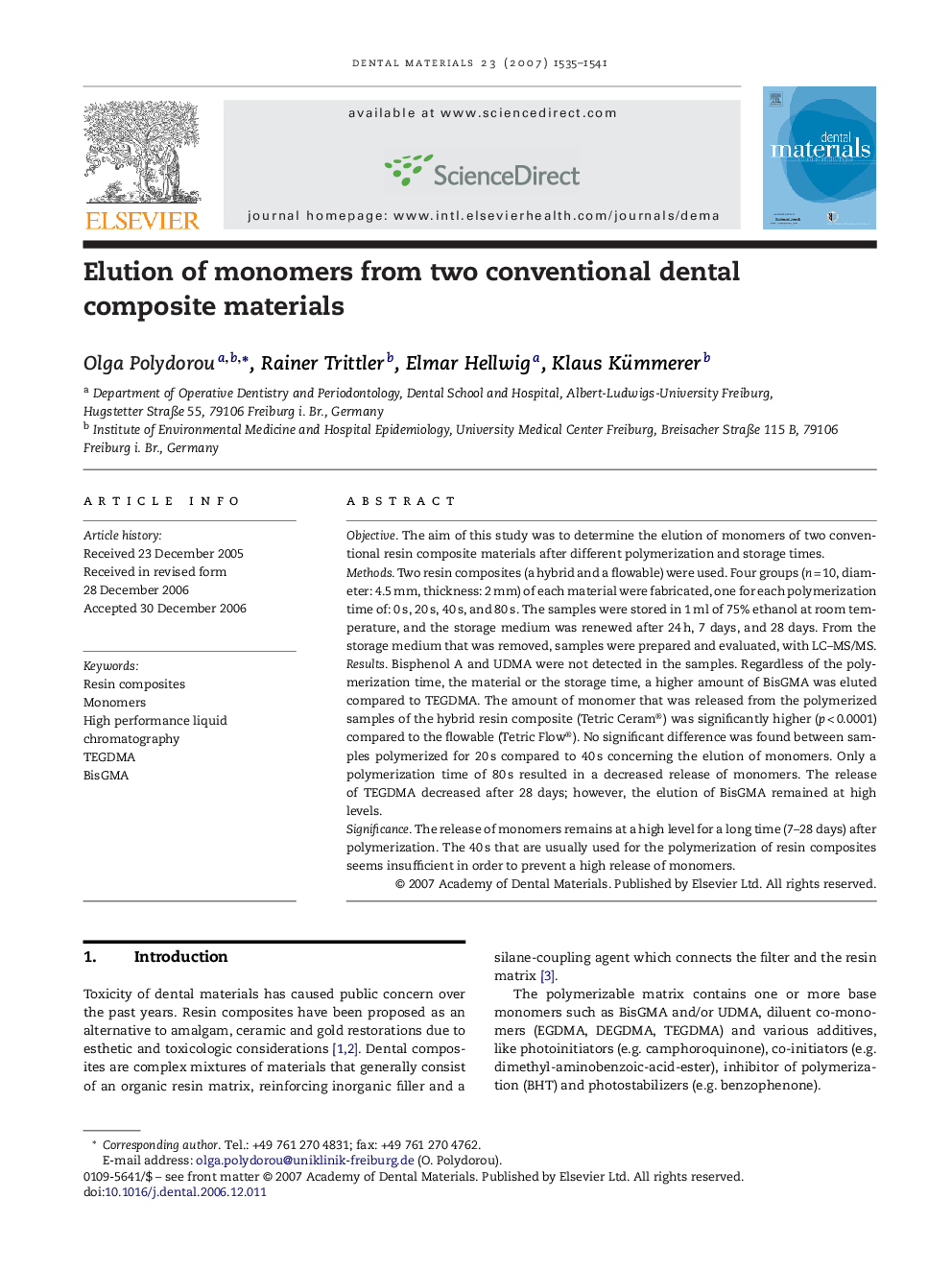| Article ID | Journal | Published Year | Pages | File Type |
|---|---|---|---|---|
| 1423098 | Dental Materials | 2007 | 7 Pages |
ObjectiveThe aim of this study was to determine the elution of monomers of two conventional resin composite materials after different polymerization and storage times.MethodsTwo resin composites (a hybrid and a flowable) were used. Four groups (n = 10, diameter: 4.5 mm, thickness: 2 mm) of each material were fabricated, one for each polymerization time of: 0 s, 20 s, 40 s, and 80 s. The samples were stored in 1 ml of 75% ethanol at room temperature, and the storage medium was renewed after 24 h, 7 days, and 28 days. From the storage medium that was removed, samples were prepared and evaluated, with LC–MS/MS.ResultsBisphenol A and UDMA were not detected in the samples. Regardless of the polymerization time, the material or the storage time, a higher amount of BisGMA was eluted compared to TEGDMA. The amount of monomer that was released from the polymerized samples of the hybrid resin composite (Tetric Ceram®) was significantly higher (p < 0.0001) compared to the flowable (Tetric Flow®). No significant difference was found between samples polymerized for 20 s compared to 40 s concerning the elution of monomers. Only a polymerization time of 80 s resulted in a decreased release of monomers. The release of TEGDMA decreased after 28 days; however, the elution of BisGMA remained at high levels.SignificanceThe release of monomers remains at a high level for a long time (7–28 days) after polymerization. The 40 s that are usually used for the polymerization of resin composites seems insufficient in order to prevent a high release of monomers.
